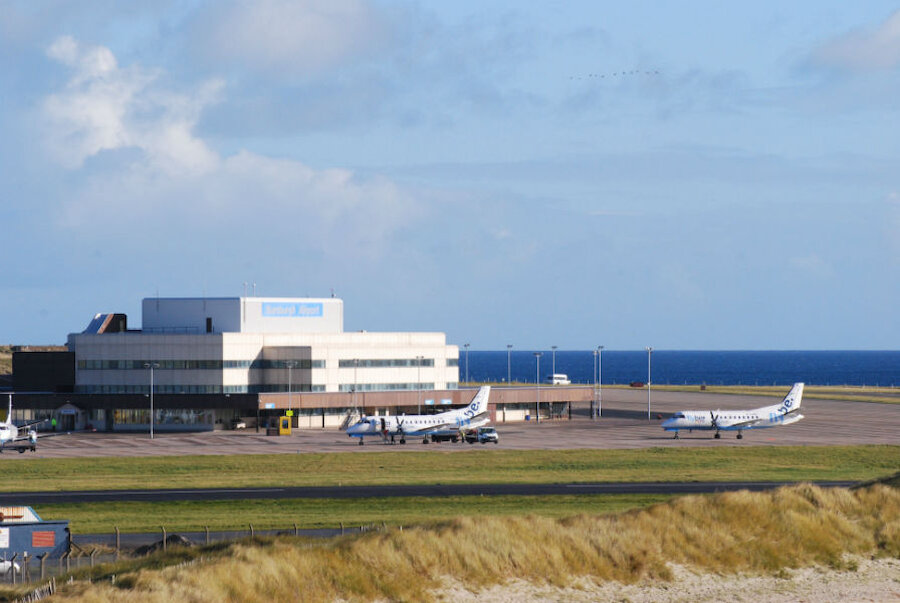Sumburgh in Shetland is Scotland's fastest growing airport, posting an 18.2% increase in passenger traffic last year.
Shetland's main airport lies at the southern tip of Shetland's mainland. Opened in June 1936 by Captain E E Fresson, the pioneer of aviation in the Highlands and Islands, it was further developed by the RAF during the Second World War. There was rapid expansion in the late 1970s and early 1980s, spurred by the need to provide air support for North Sea oil exploration. In 1978, Sumburgh handled more than a quarter of a million passengers and a new, much larger terminal was opened in 1979.
Changes in oil industry practice subsequently saw a reduction in numbers but, more recently, there has been steady growth resulting from the return of oil traffic and a substantial increase in scheduled passenger flights, so that, in 2014, Sumburgh handled 319,597 passengers. The Scottish Government has agreed to support redevelopment of the airport, including a major refurbishment of the 1979 passenger terminal.
Sumburgh's schedule offers a choice of direct flights by Flybe to Kirkwall, Aberdeen, Inverness, Edinburgh and Glasgow, with excellent onward connections through Flybe partners. For example, the British Airways website offers a choice of up to 16 daily services to London, with one stop en route. Many more options are available using Flybe or combinations of airlines. Shetland passengers often choose to fly with the world-wide Emirates network from Glasgow or take transatlantic services from Glasgow or Edinburgh. There is also a year-round direct flight to Bergen in Norway and an additional summer service.
Inglis Lyon, Managing Director of Highlands and Islands Airports Limited, said that he was delighted to see the airport's success, though he recognised that the oil-related component of its traffic would be affected by changing prospects in that industry. He said:

